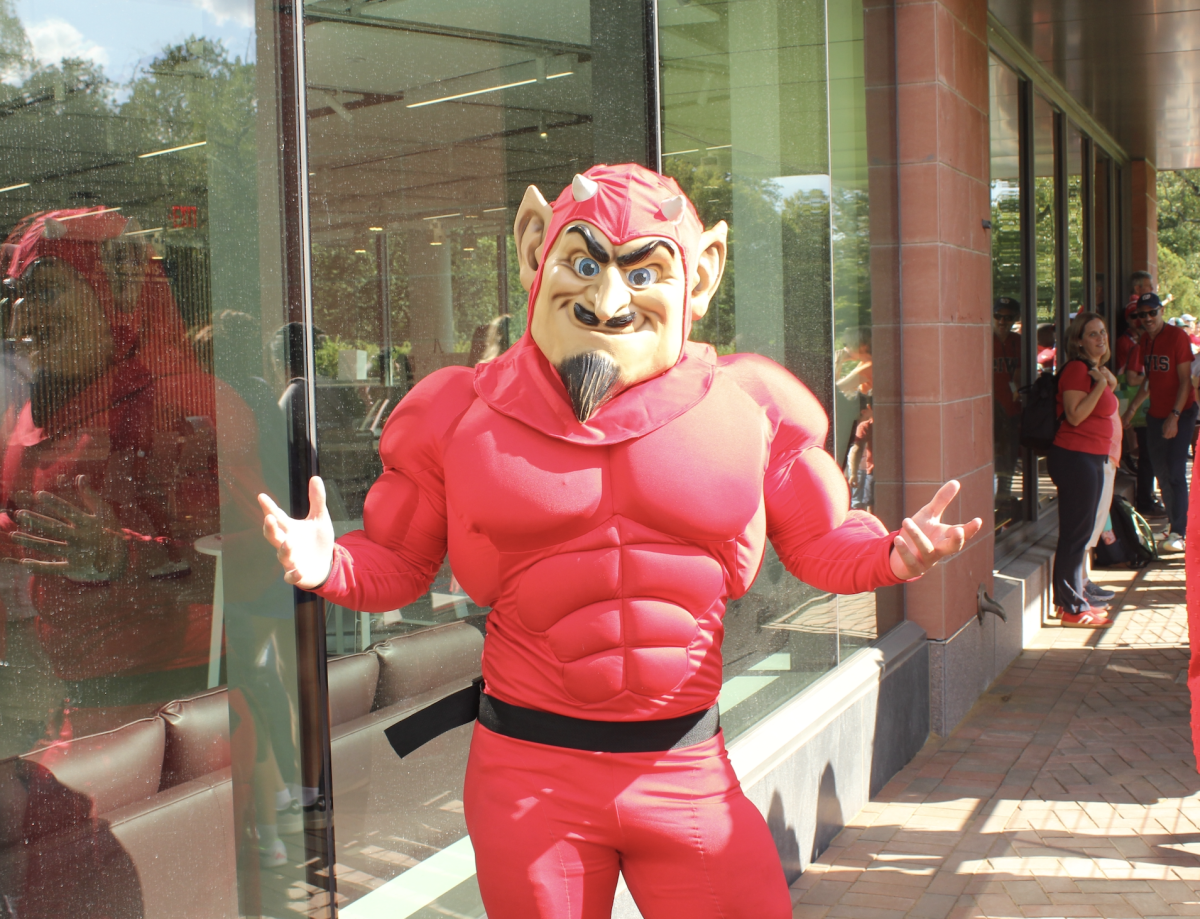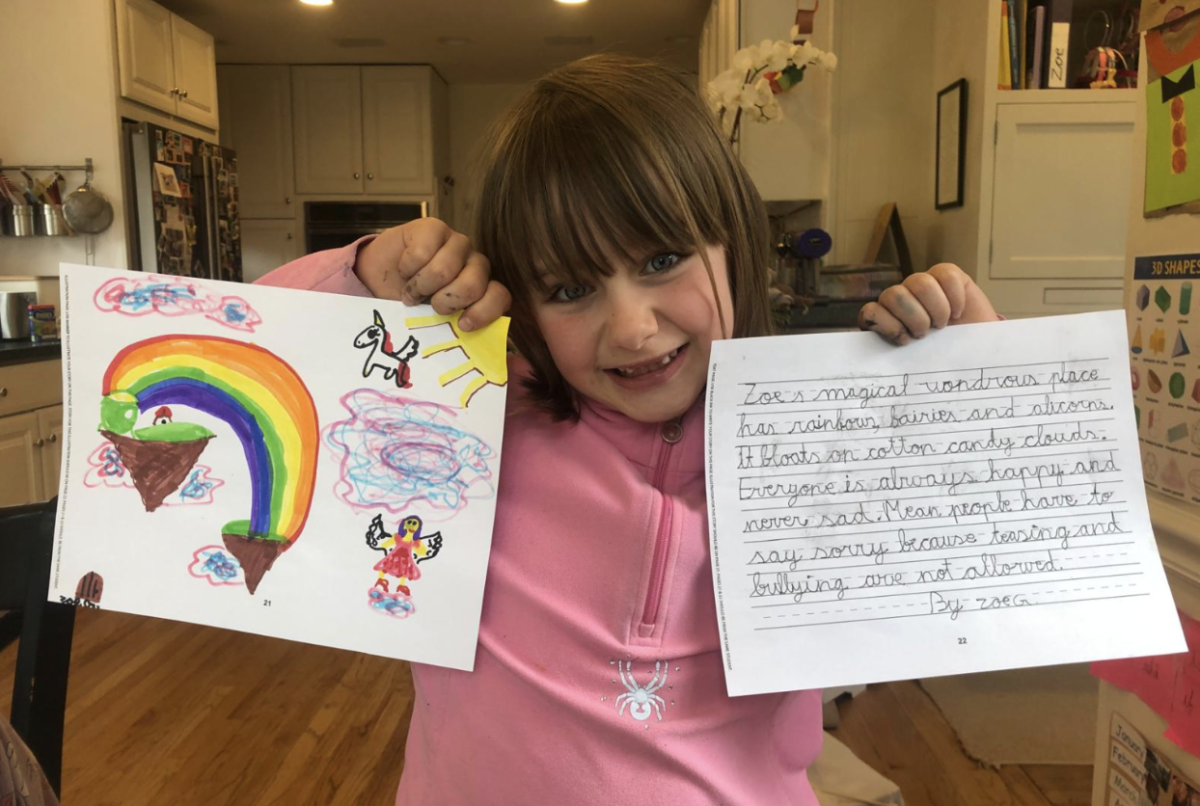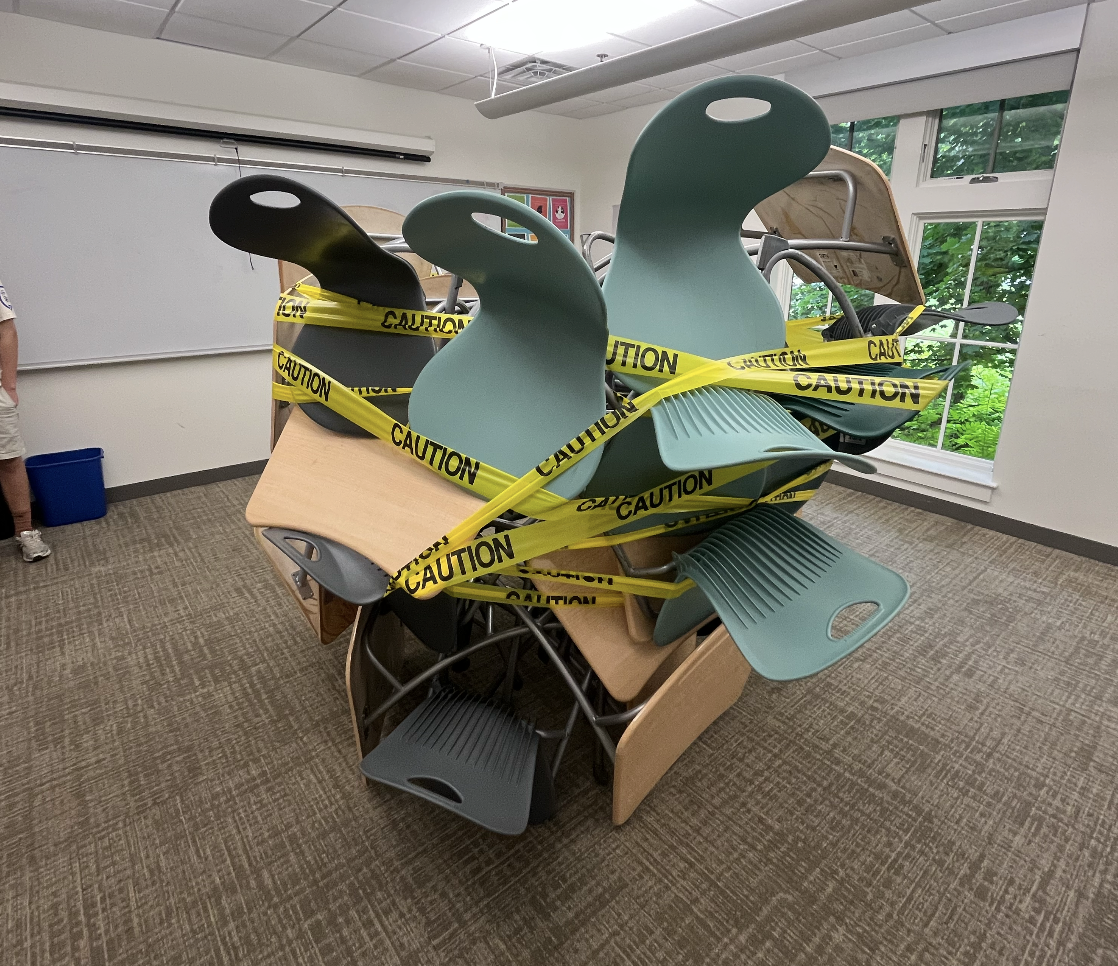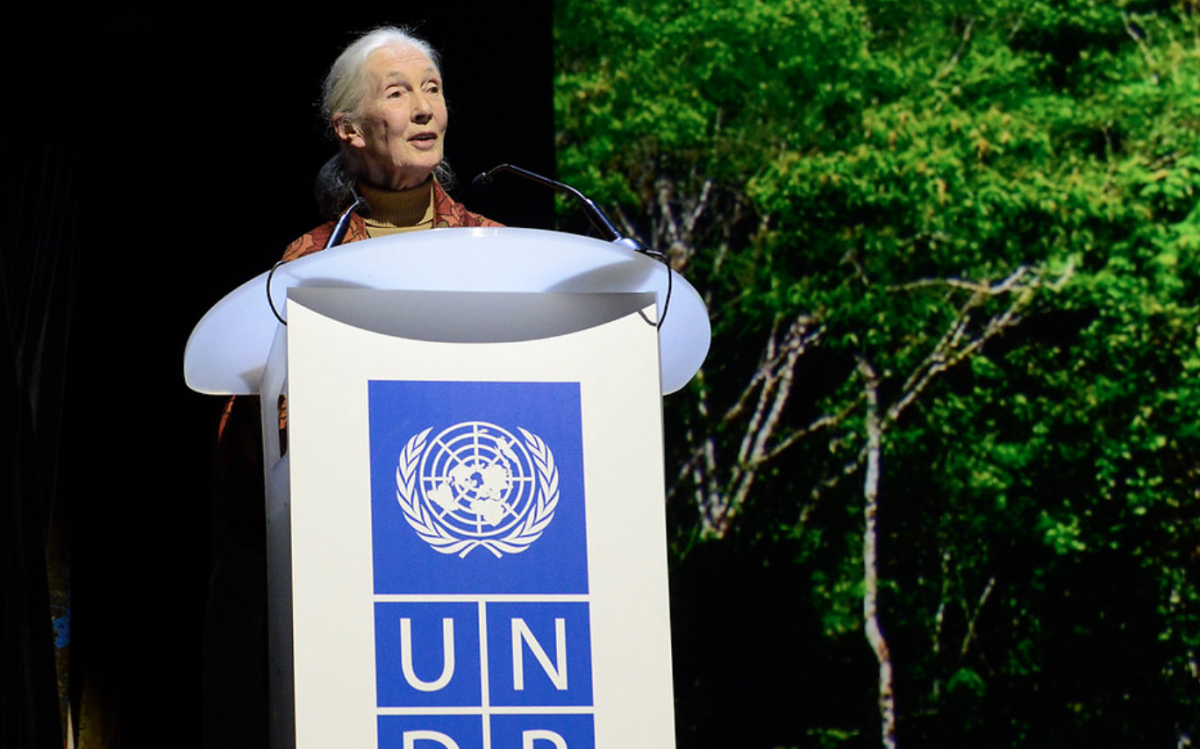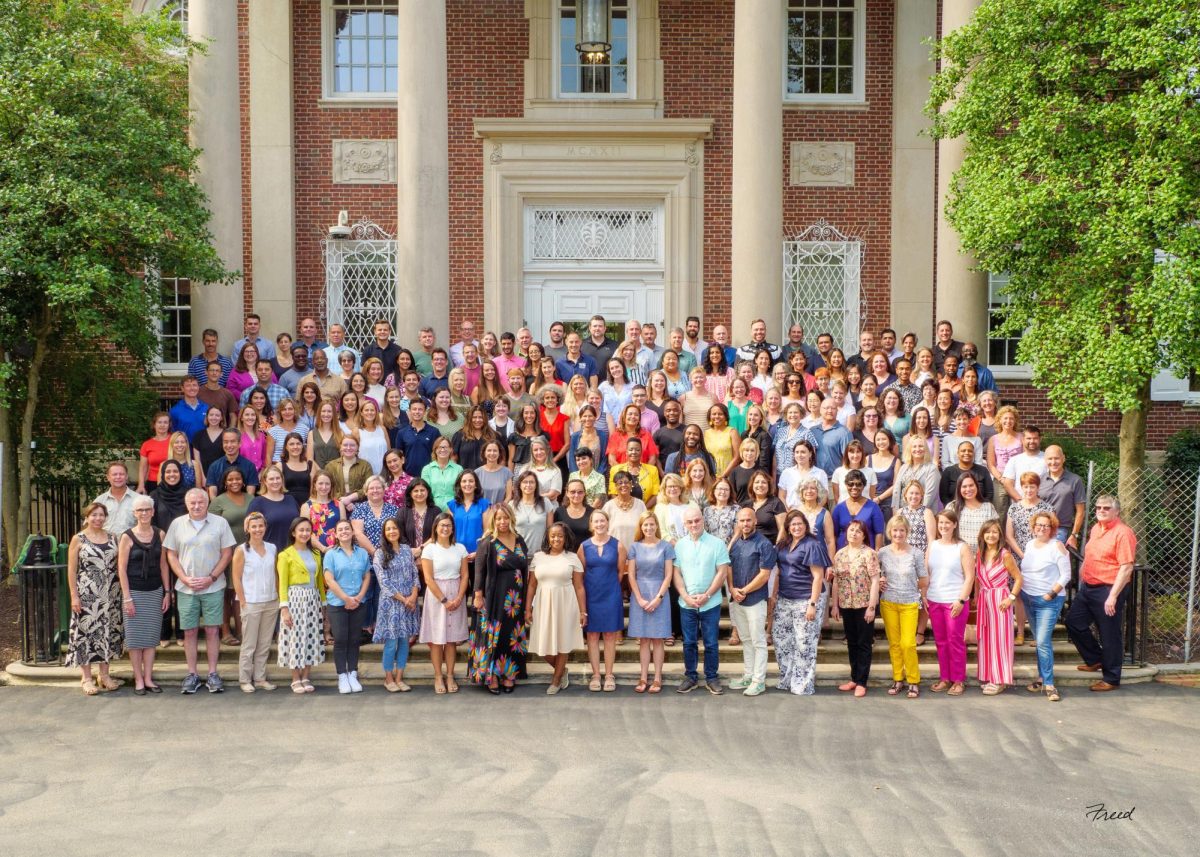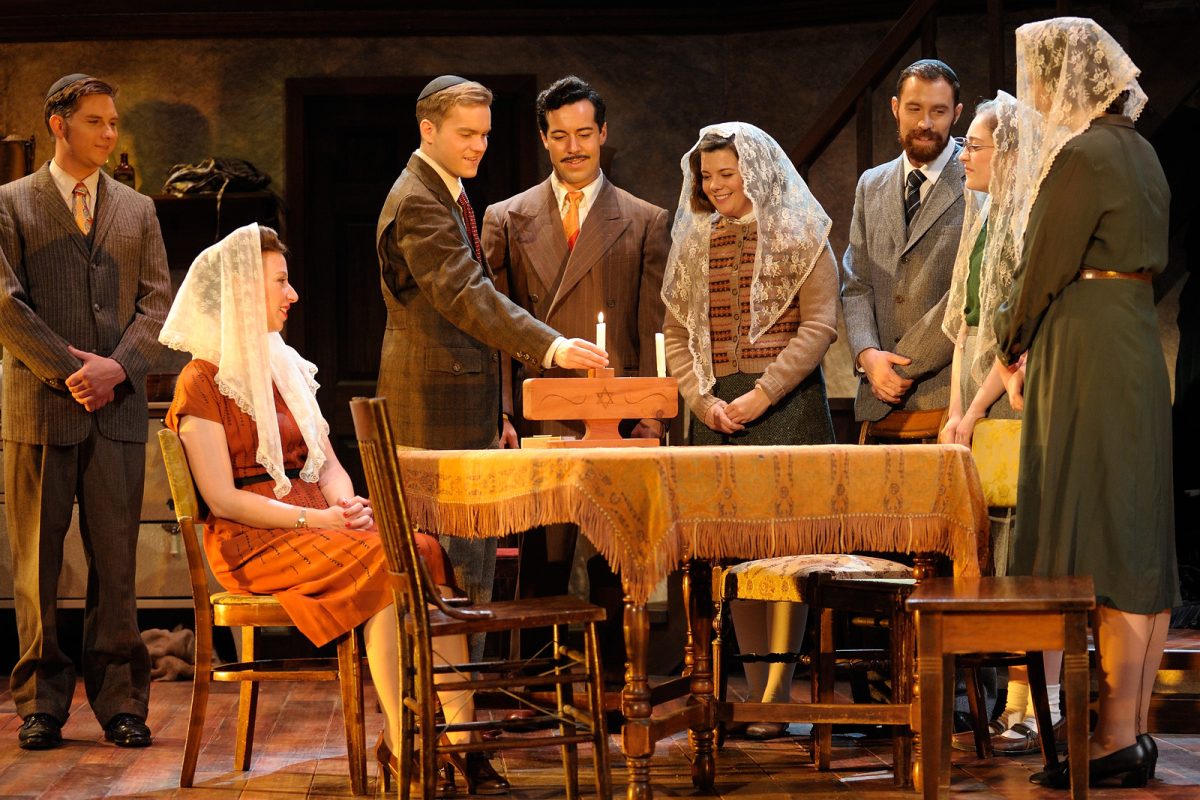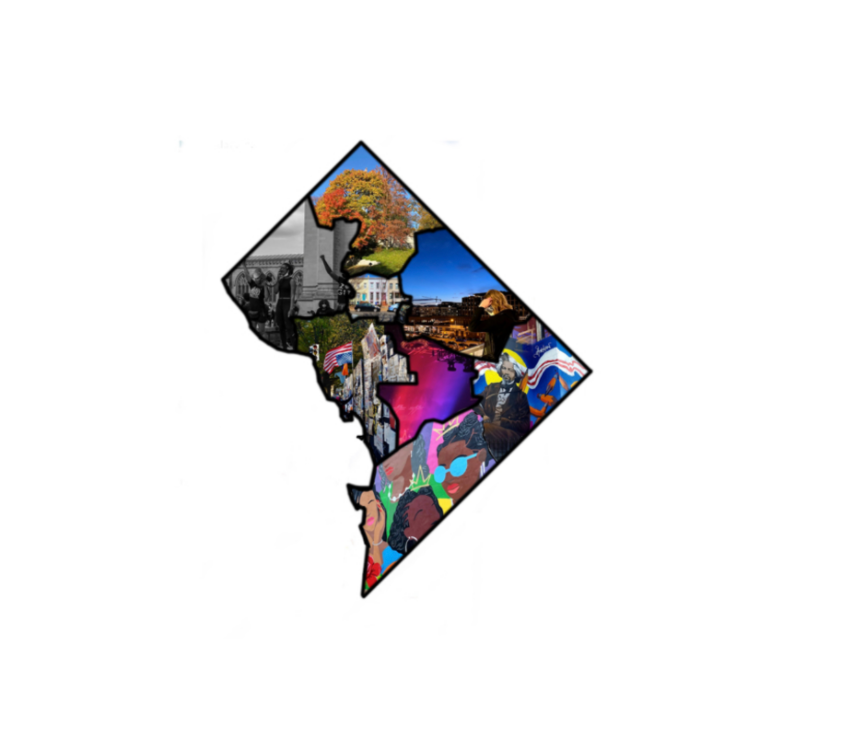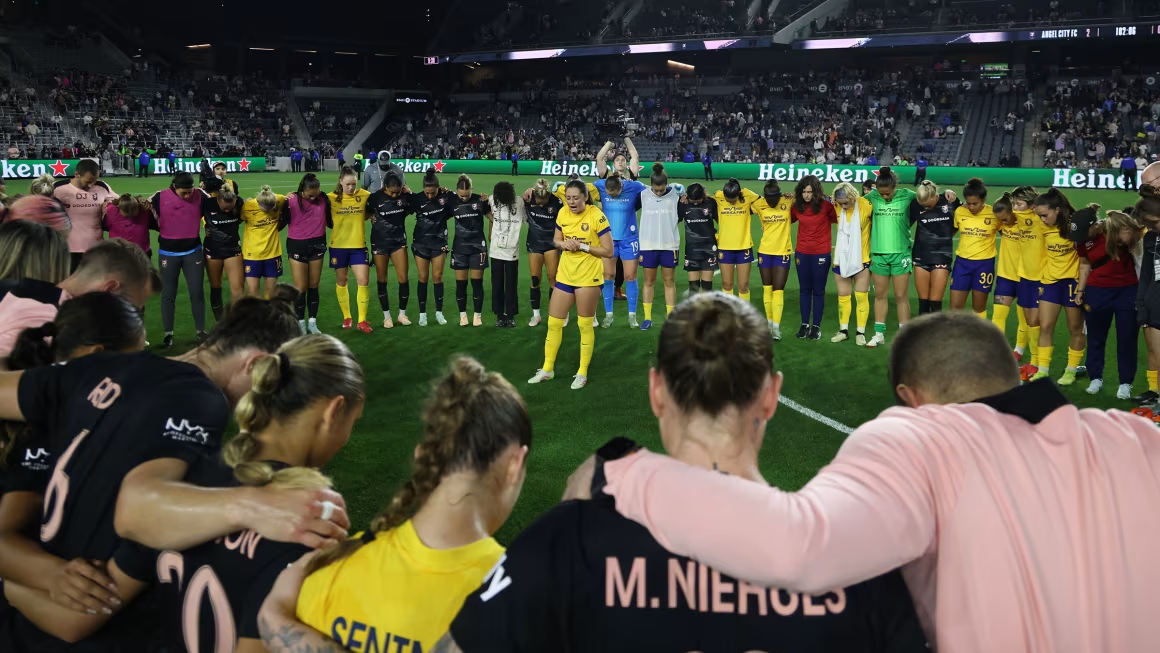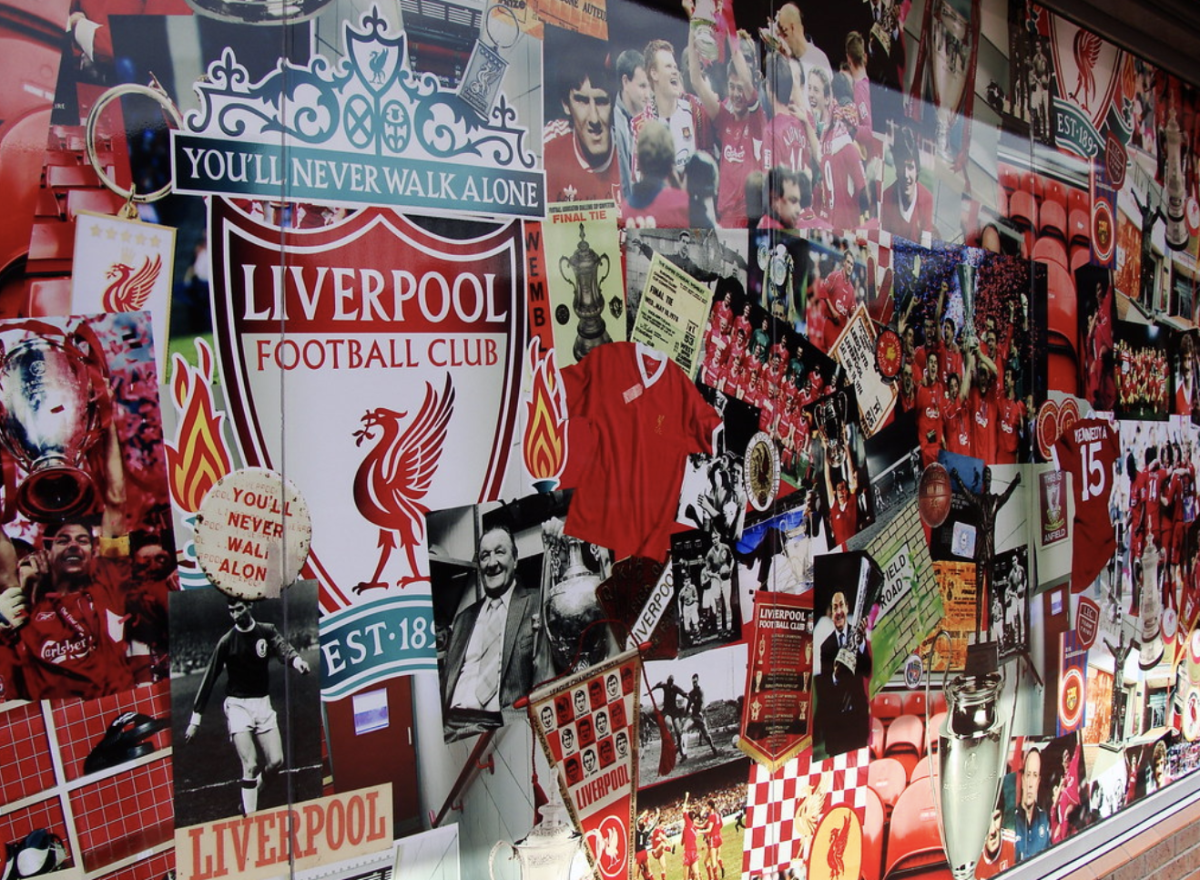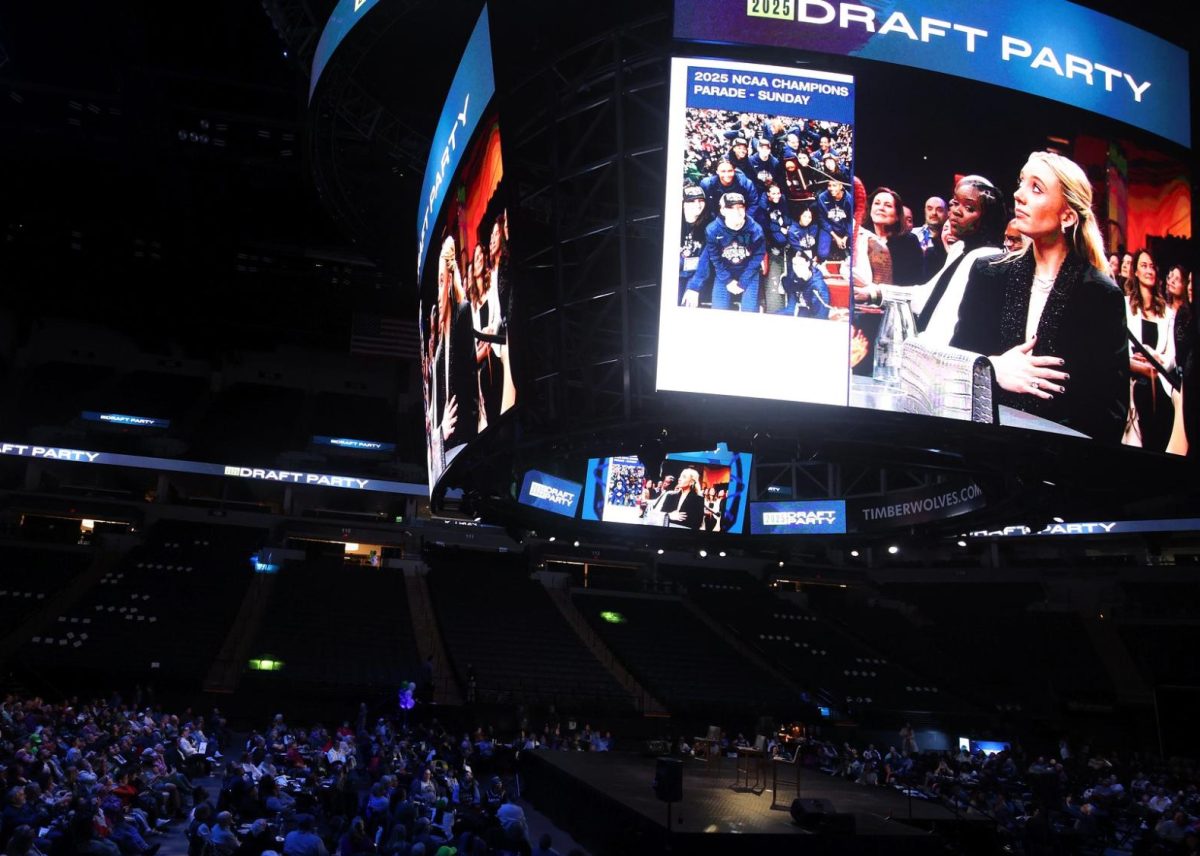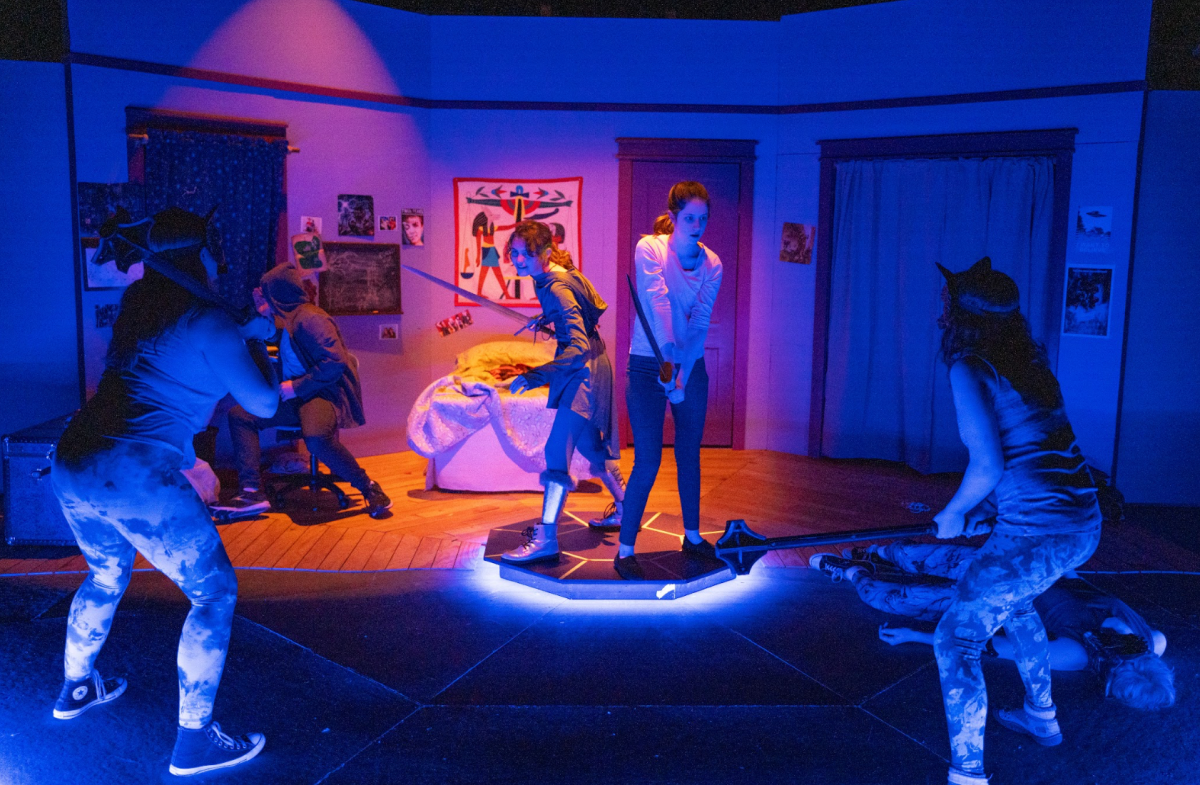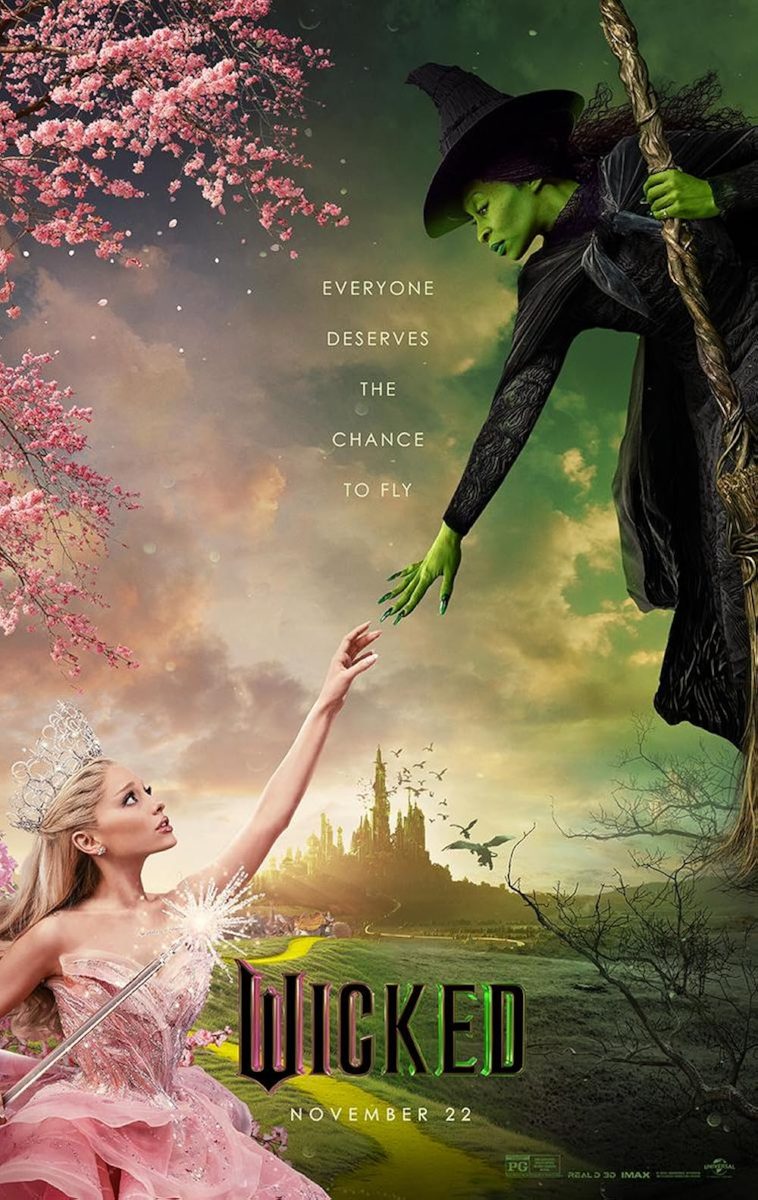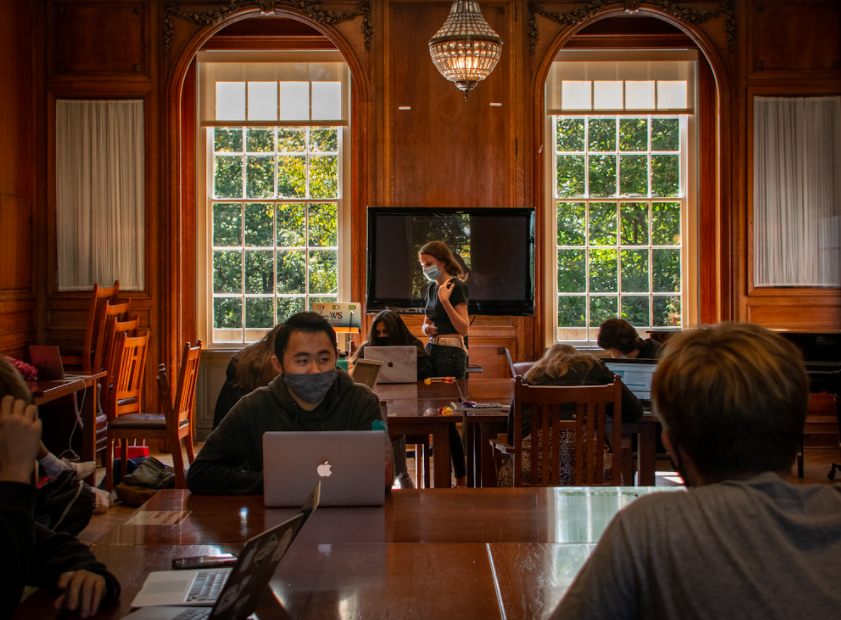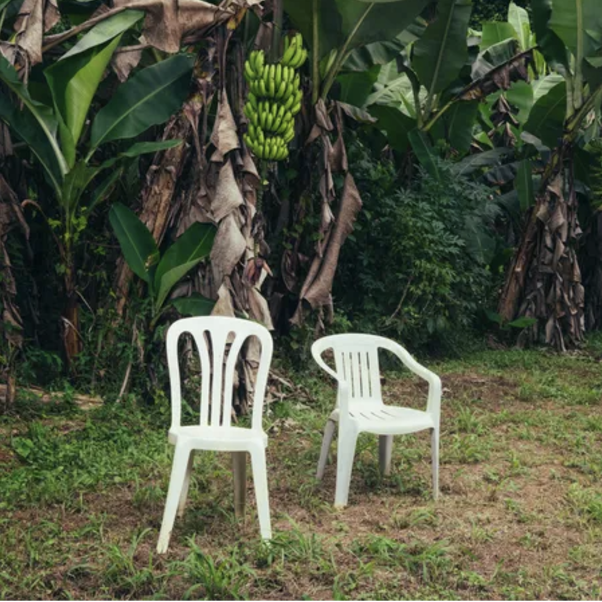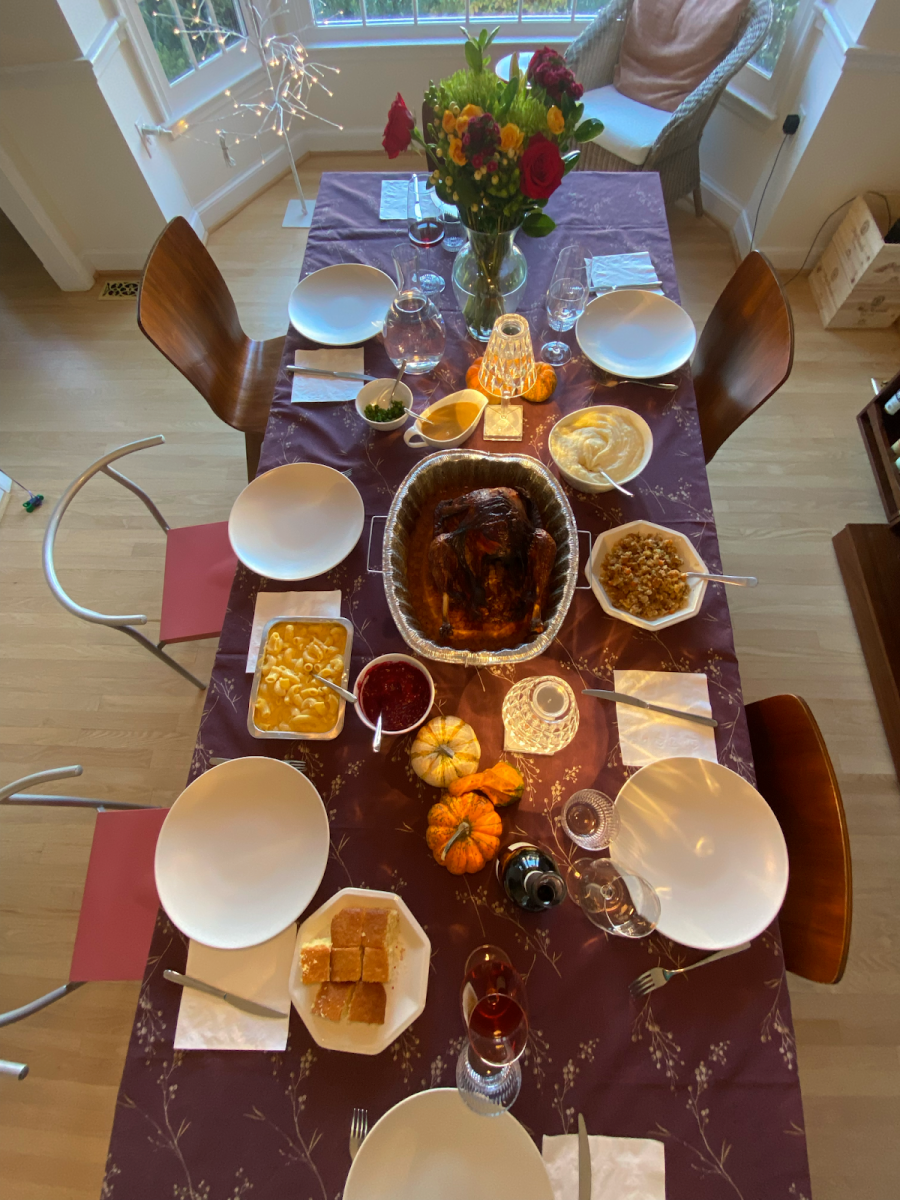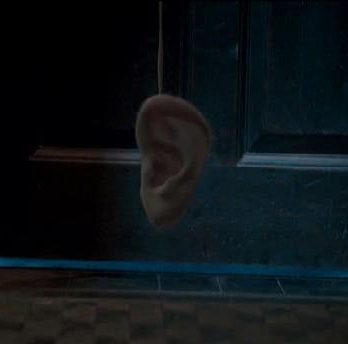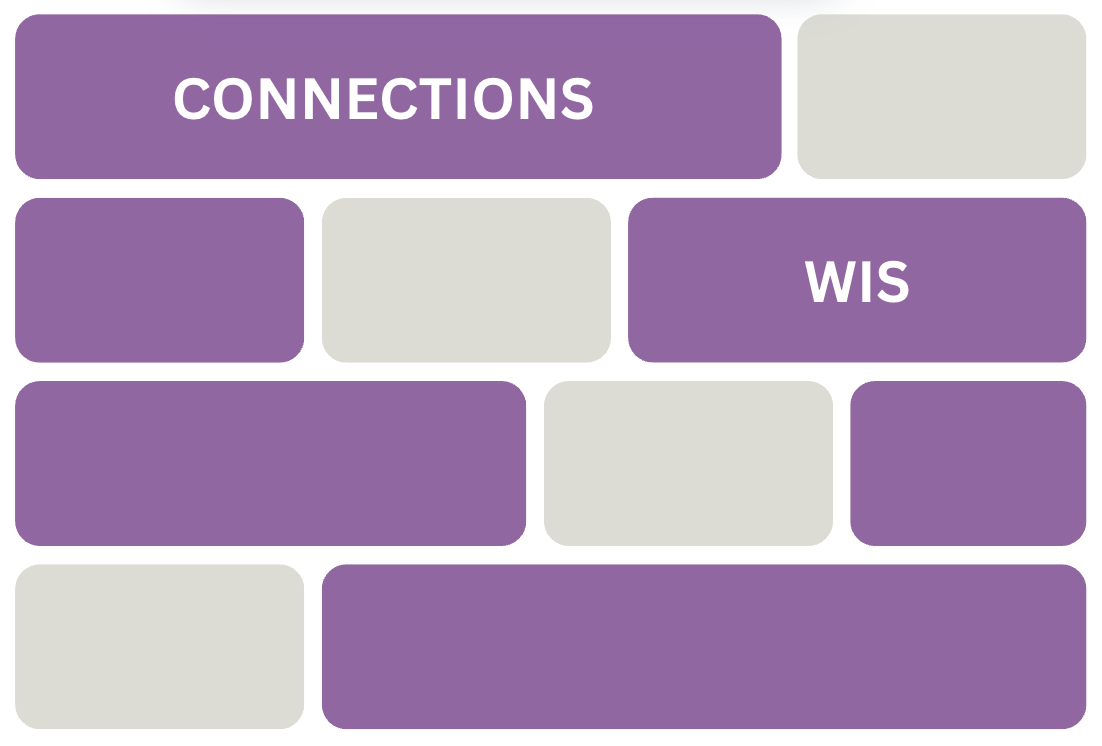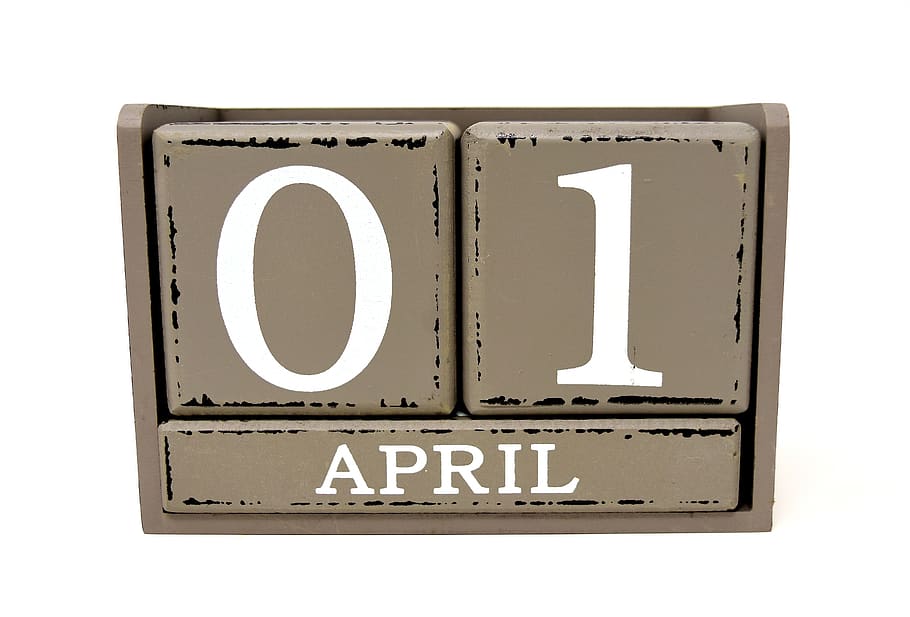Diving into the world of fantastical and nerdy productions can be intimidating at first, but if staged correctly, it can leave a lasting impression on those who choose to indulge in its playful and quirky elements.
“She Kills Monsters” is a comedy that explores themes of grief through the lens of the popular fantasy role-playing game, Dungeons and Dragons. The story follows Agnes Evans, played by senior Maddy Fine, who discovers a Dungeons and Dragons notebook after her sister Tilly, played by sophomore Chiara Venturi, dies unexpectedly. Agnes then embarks on a journey using the book to follow Tilly through role play of the book, as she embarks on an otherworldly journey. She uncovers aspects of Tilly’s life she never knew, meets new characters, and is forced to fight with or against them. This adventure is ultimately a metaphor for Anges and her grief as she seeks to understand her sister’s identity.
There was a large crowd on the second night of the “She Kills Monsters” production, with many of the cast members’ friends and family and faculty lining up to see the performance. The set was sectioned into three parts: a counselor’s office, a bedroom in the middle, and an apartment door. LED lights strung below the crevices of the stage created an immersive feel. The show switched between a chimerical world and the real, monotonous world the characters lived in. The interplay between the characters, who are in Ohio, and the clash between the Dungeons and Dragons world created a cliché but convincing narrative.
The play started slowly with comedic dialogue, which had fallen flat, as the beginning part of the first act had a slow start. The play was fairly dependent on one-liner ‘90s references that were, at times, difficult to understand due to the actors’ delivery. The deliveries felt anticipatory, as if the actors knew the jokes were outdated. They tried to adopt a snarky tone for the referenced jokes and one-liners, but unfortunately, some of the humor did not land. However, this dull start evolved further into more congenial scenes, which were, in turn, very humorous and enjoyable once the plot thickened.
Nonetheless, once the show picked up its pace with certain fight scenes, it became enthralling to watch as the characters embarked on their journey. The majority of the fight scenes were very interesting and intricate, but it should be noted that some actors lost steam, considering the heavy and percussive stage swords. However, it was clear that this campy style of fighting was tiring, as some actors were less convincing than others. The props and production of the play were very convincing, and eye-light papier mache dragons made an unexpected appearance, leaving the crowd entertained and amused.
Several performances from the Upper School actors were memorable, adding much-needed essence to the story. Venturi seemed to flow naturally along with the other characters, as she leveraged many of her co-stars into becoming a part of the mystical journey, including Agnes. Freshman Rose Satchel’s acting was phenomenal for playing an older character, as she convinced the audience of her character. She seemed to meld into it and immerse herself in the world without creating a detached feeling, unlike others.
Moreover, junior Leo Naftulin brought a delightful touch of comedy, serving as a recurring character who faced his death the same way each time, which was effortlessly played. And no one could forget the infamous, bloodthirsty cheerleaders played by junior Ava Luck and senior Cayetana Hamilton Garcia. The campy, soapy, and dramatic nature of their characters never failed to entertain the audience. They brought energy, pep, and cheer, especially with their sprightly dance number, choreographed by senior Lucas Sprinsteen. This number had the audience singing and cheering along, with it being one of the most engaging and interactive parts of the show.
Overall, the actors did a very good job of forming their characters and selling the plot. The campy and geeky nature of this play is sure to leave you charmed, as its dynamic elements create unexpected laughter and fondness.
By Carolina Fournier Miranda

